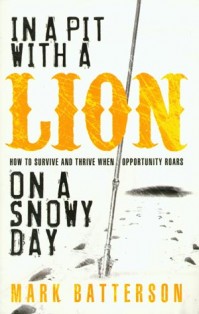Take the long view

[stag_intro]Too many leaders have lost long-term impact because they couldn’t get past short-term frustration. Here are 3 tips to help you keep the short-term from short-circuiting the long-term.[/stag_intro]
You don’t have to be the fastest if you’re committed to going the farthest.
One of my favorite stories is known in running circles as “the legend of Cliff Young.” Instead of taking the time to tell the whole story now (you can read the amazing account of Cliff Young here), let me give you the short version: he won a 500+ mile endurance race at the age of 61 while wearing overalls and work boots.
Yes, you read that right. 61.
How he did it was simple, but not easy: he never stopped running.
There is a fascination with going fast and often a lot of perks that come with it. It can land your church on the list of the 100 Fastest Growing Churches in America. You may be invited to share your church-growth strategy or ink a multiple book deal with a major publisher. My personal favorite, though, is that you may achieve the social media level of popularity that gains thousands of shares and retweets even though what you posted was something others have posted for years before you.
But Cliff Young didn’t have to try to outrun the younger, faster runners because he entered that race committed to running the farthest. He simply refused to stop moving until he had moved past the finish line.
If we get caught up in the short-term pressure to produce quick results, we’ll find ourselves burning out before we ever step out. The beauty of the long view is that it allows you to pace yourself and not feel bad about whether it seems too slow to someone else.
[Tweet “You don’t have to be the fastest if you’re committed to going the farthest.”]
In the long run, endurance is more valuable than enthusiasm.
Starters are a dime-a-dozen. There is no lack for entrepreneurs and church planters in the world, and while it’s great to celebrate the idea of starting, it’s better when we can applaud the reality of finishing.
I’ve run in and completed a handful of endurance races, and the one thing that I’ve noticed at all of them is that there is a difference in the crowd at the starting line and the crowd at the finish line. We cheer runners at the start, but we admire runners at the end. Here’s why.
It takes enthusiasm to start something, and that’s just not very hard to pull off. People enthusiastically start books, budgets, and diets all the time. They tweet and post about their plans, and yet most of them won’t finish because enthusiasm can only carry us so far.
At some point (and for endurance runners, it’s usually after mile 20), the only thing getting you to the finish line is a willingness to endure the pain in order to get the medal. It was even true of Jesus!
For the joy set before him he endured the cross, scorning its shame, and sat down at the right hand of the throne of God. (Hebrews 12:2)
Realizing this will allow you to give yourself a break when you don’t feel as excited about what you started as you did the day you started it. It also allows you to give others a break when their enthusiasm wanes. It’s normal, and I would submit that the bigger your vision, the more frequently you’re going to encounter the enthusiasm drop and the more often you’re going to need to tell your team (and yourself) that it’s okay. The great thing about enthusiasm is that it often returns at the next cheering section if you just don’t quit.
[Tweet “In the long run, endurance is more valuable than enthusiasm.”]
Today’s problems are best seen with tomorrow’s perspective.
There may not be a more powerful leadership tip than this one. Actually, there may not be a more powerful LIFE tip than this one, because while trouble today is guaranteed, moving past that trouble isn’t. Embracing this last tip will help.
There are all kinds of ways to say this, and perhaps Stephen Covey’s “begin with the end in mind” is the most memorable one. But I’d put Mr. Covey’s in a distant second to the words that Paul wrote to the believers in Corinth:
For our light and momentary troubles are achieving for us an eternal glory that far outweighs them all. (2 Corinthians 4:17)
If you and I don’t take the long view, then we’ll never be able to see past the present. We’ll never find the motivation to move beyond what we see now toward what we hope to see later. But when we see today’s problems with tomorrow’s perspective, we see that the payoff at the end far outweighs the pain in the middle.
And that, my friend, makes all the difference on this long road we’re traveling.
[Tweet “Today’s problems are best seen with tomorrow’s perspective.”]








hey pastor Paul
i really like you a lot
love
Laney
hi Paul Jenkins
you are ready good pastor to me
Your bojangles
Laney
paul Jenkins
you have happy day
god bless for you
Your bojangles employees
Laney
Hi Paul
i love you so very much
Love
Your bojangles employees
hey pastor
you have nice good morning
Laney
hey pastor Paul
i really like you so much
you have nice day
your favorite bojangles employees
Laney
hey pastor Paul
you have nice day
Your bojangles employees
Laney
hi Paul
you are ready nice
love
Laney
hi Paul Jenkins
good morning
I love you
you are ready good pastor and teacher my rest life
your bojangles employees
hey pastor Paul Jenkins
how is your day
I love you
you are ready good friend
your favorite bojangles employees
Hello Paul Jenkins
you are ready nice to me
love
your bojangles employees
paul Jenkins
you are ready awesome
love
Your bojangles employees